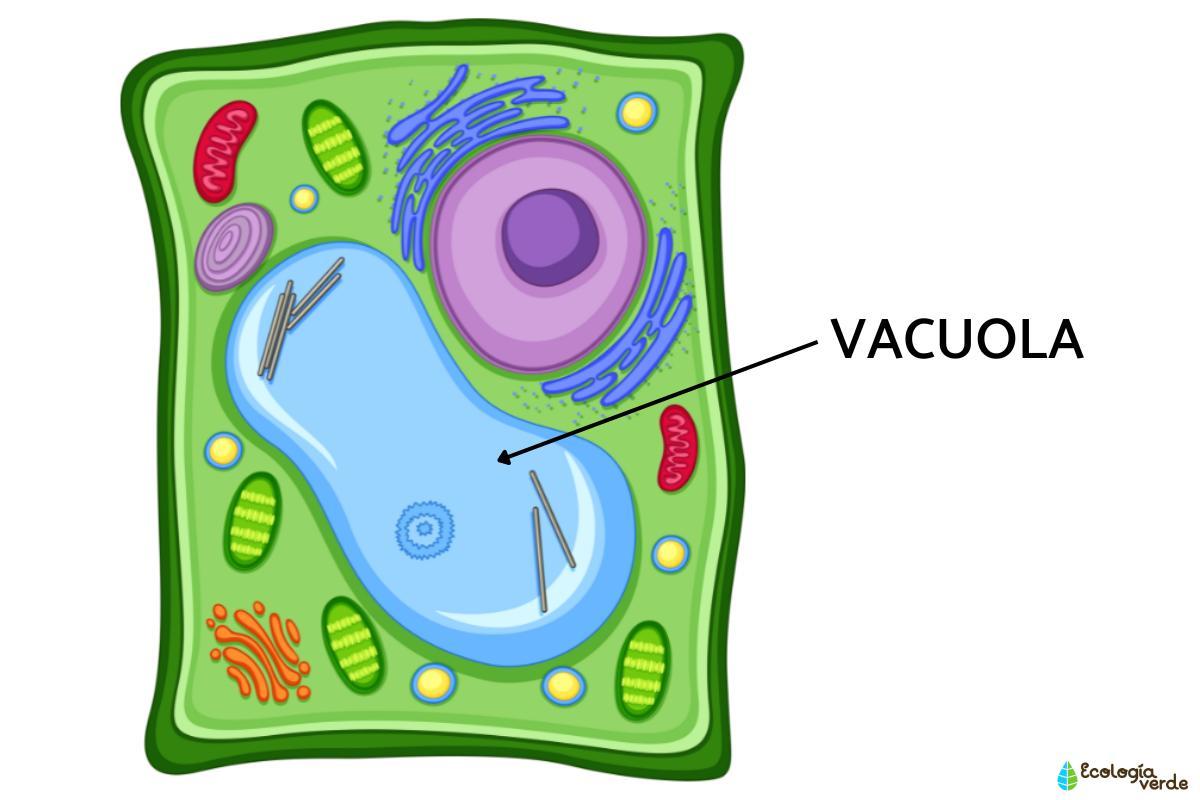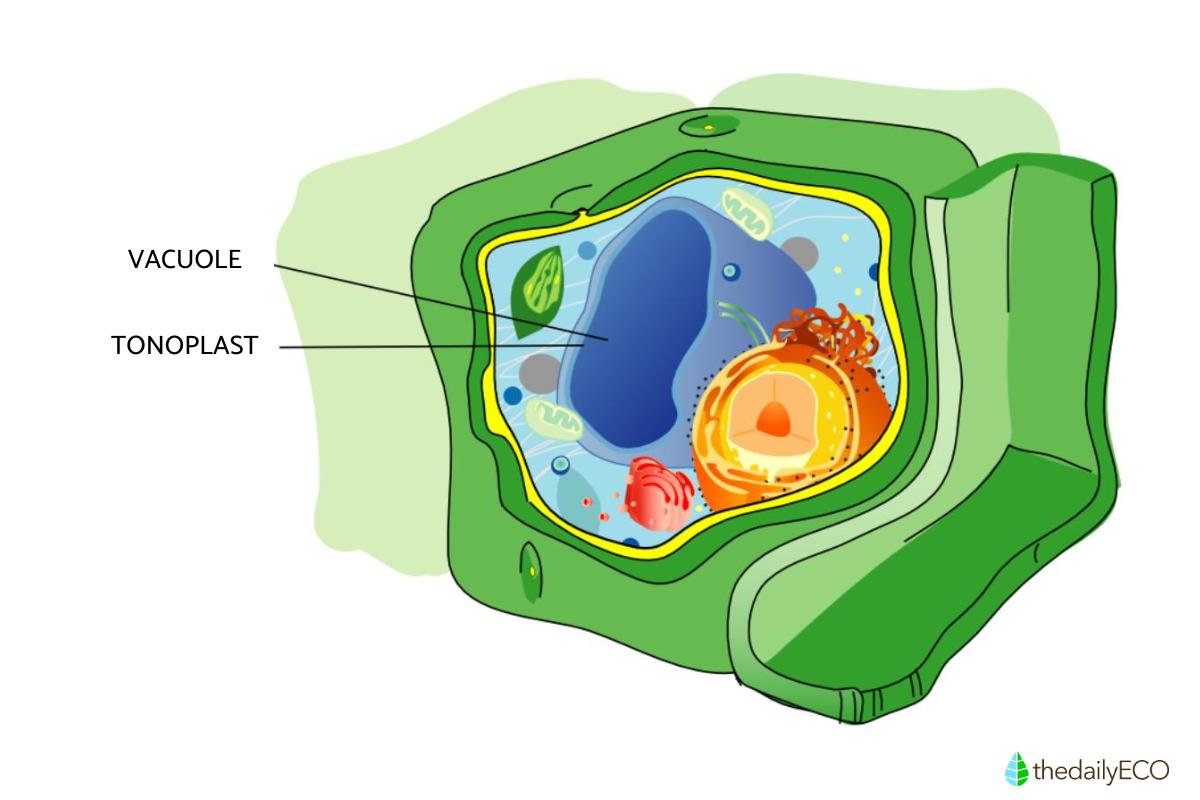What are Vacuoles and What Do They Do?


Within the microscopic world of cells, a specialized compartment called the vacuole plays a vital role in the survival and reproduction of the cell. This membrane-bound sac acts as a storage unit, waste disposal center, and even a regulator of water balance within the cell.
In this article by thedailYECO, takes a close look at vacuoles, exploring their structure, functions, and key characteristics.
What is a vacuole?
Vacuoles are essential compartments within cells, enclosed by membranes that separate them from the surrounding cytoplasm. It acts like a tiny storage compartment within the cell. These compartments serve as versatile storage units, holding a diverse array of fluids and materials necessary for cellular function. These materials include water, enzymes, sugars, salts, proteins, and other nutrients vital for cell health and metabolism.
They are present in various types of cells, ranging from simple single-celled organisms to more complex multicellular organisms. It can be found in plant and fungal cells, and some protist, animal, and bacterial cells.
The formation of vacuoles occurs through a process known as vesicle fusion, where multiple small membranous vesicles merge to form larger structures. This process gives vacuoles their dynamic nature, allowing them to adapt to the changing needs of the cell.
There are different types of vacuoles depending on the cell and its function. For example, contractile vacuoles in some single-celled organisms help regulate water balance by pumping out excess water.
The term "vacuole" was first introduced by French biologist Félix Dujardin in 1841 to describe empty spaces observed within protozoan cells. Since then, vacuoles have been extensively studied, particularly in plants, where they play crucial roles in growth, development, and adaptation to different environmental conditions.
Want to delve deeper into the fascinating world of the cell? Our next article explores the different cell organelles and their crucial functions, the tiny machines that keep cells alive and working!

Characteristics of the vacuole
The vacuole, a vital organelle within cells, possesses several key characteristics essential for its role in cellular function:
- Vacuoles are enclosed by a membrane, known as the tonoplast, which separates their internal contents from the surrounding cytoplasm. This membrane is essential for maintaining the integrity of the vacuole and regulating the movement of molecules in and out of the organelle.
- Vacuoles can vary significantly in size, ranging from small, membrane-bound vesicles to large, central vacuoles that occupy a significant portion (90%) of the cell's volume. The size of vacuoles can change dynamically in response to cellular processes and environmental conditions.
- One of the primary functions of vacuoles is to serve as storage compartments within the cell. Vacuoles can store a wide range of materials which can be utilized by the cell for various purposes, such as osmoregulation, nutrient storage, and detoxification.
- Vacuoles play a regulatory role in maintaining cellular homeostasis by controlling the internal environment of the cell. They regulate the concentration of ions and other solutes within the cell, as well as the pH and osmotic pressure of the cytoplasm. Vacuoles also participate in processes such as turgor pressure regulation in plant cells and water balance in animal cells.
- Vacuoles are dynamic organelles that can undergo changes in size, shape, and composition in response to cellular and environmental cues. They can fuse with other vacuoles or with membrane-bound vesicles to alter their size and content. Vacuoles can also undergo processes such as exocytosis and endocytosis to release or take up materials from the external environment.
- Vacuoles can originate from various cellular structures, including the endoplasmic reticulum, Golgi apparatus, and lysosomes. They develop through processes such as vesicle formation, membrane fusion, and protein trafficking. The development and maturation of vacuoles are tightly regulated and coordinated with other cellular processes to ensure proper organelle function.
Curious about the life cycle of a cell? Our next article explores the fascinating journey of a cell, from growth and division to creating new life, in a process called the cell cycle.
Vacuole functions
Vacuoles are indispensable organelles within cells, fulfilling various vital functions that contribute significantly to cellular structure and metabolism:
- Vacuoles play a fundamental role in cell growth by expanding in size, thereby contributing to the overall enlargement of the cell. This enlargement leads to the development of turgor pressure, which is crucial for maintaining cell hydration and preserving tissue rigidity, both of which are essential for optimal cellular functionality.
- Within vacuoles, the disintegration of macromolecules and the recycling of their components occur. All cellular organelles, including ribosomes, mitochondria, and plastids, can be deposited and degraded within vacuoles, facilitating cellular metabolism and waste management.
- Vacuoles serve as compartments to isolate toxic secondary products of metabolism from the rest of the cytoplasm. For instance, alkaloids like nicotine, harmful to the cell if left in direct contact with other cellular components, can be sequestered within vacuoles, safeguarding cellular integrity.
- Vacuoles, particularly contractile vacuoles found in some single-celled organisms, play a vital role in regulating water balance. They can pump out excess water to maintain the cell's optimal water content.
In addition to these primary functions, there are other specialized vacuolar structures that serve distinct purposes:
- Pulsatile vacuoles: these vacuoles are responsible for extracting excess water from the cytoplasm and expelling it outside the cell through active transport mechanisms. This crucial process prevents cellular damage caused by excessive water accumulation, which could lead to cell rupture.
- Digestive vacuoles: specialized in the digestion of nutritional substances, these vacuoles break down ingested materials into simpler components. Upon completion of digestion, waste products are eliminated from the cell, contributing to its internal balance and metabolic efficiency.
- Food vacuoles: formed from the cell membrane and the smooth endoplasmic reticulum, food vacuoles serve a nutritional function by storing and processing nutrients for later use by the cell. This allows the cell to efficiently manage its energy and nutrient resources, ensuring optimal cellular function and survival.

Vacuole structure
The vacuole, enveloped by a simple membrane known as the tonoplast. This membrane is permeable and crucial for regulating the passage of substances in and out of the vacuole.
Within the vacuole, a fluid substance called vacuolar juice is housed, comprising water along with various organic and inorganic compounds. These include reserves, waste products, poisons, malic acid, and water-soluble pigments, which collectively contribute to cellular homeostasis and metabolic processes.
Under certain conditions, vacuoles can exhibit structural modifications, including the development of folds in their membrane, giving rise to temporary and mobile structures such as transvacuolar strands and bulbs.
- Transvacuolar strands: these are small channels that traverse the interior of the vacuole, connecting different regions of the cytoplasm. Through these channels, cytosolic molecules and even some organelles, such as Golgi apparatus cisternae, mitochondria, plastids, and endosomes, are transported. Transvacuolar strands facilitate communication and transportation within the cell, contributing to cellular function and organization.
- Bulbs: bulbs are independent spherical structures found within the vacuole, characterized by a diameter ranging from 1 to 22 µm. They consist of a double membrane and contain cytoplasmic material. While their precise function is not fully understood, some researchers propose that bulbs may serve as temporary storage compartments for the tonoplast or artifacts resulting from vacuolar dynamics. Further research is needed to elucidate the exact role of bulbs within the vacuolar system and their significance in cellular physiology.
Intrigued by the variety within living things? Our next article explores cell types, the specialized building blocks that create the incredible diversity of life on Earth.
If you want to read similar articles to What are Vacuoles and What Do They Do?, we recommend you visit our Biology category.
- Madina, M. et al. (2019). Vacuolar membrane structures and their roles in plant–pathogen interactions. Plant molecular biology. 101: 343-354.
- Shimada, T. et al. (2018). Plant vacuole. Annual review in plant biology. https://doi.org/10.1146/annurev-arplant-042817-040508.







